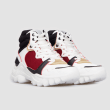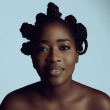Getting your first job is hard in any industry. Everyone says they want to hire someone with experience, but you can’t get any experience because no one will hire you. You know you have the skills, but you don’t have anywhere to prove it. The first step is to get started.
Start Designing
Even if it’s not “professional” experience, there’s no substitute for hours spent doing the work. When you start landing interviews and sitting in front of industry professionals, they’ll be able to tell if you actually know what you’re talking about, and the best way to learn is by practicing.
School projects and volunteer work can be a great way to practice your skills and gives you a safe space to make mistakes when the stakes are low.
Design a Portfolio
Designing your own portfolio lets other people see what you’re capable of, and gives you a place to keep all your accomplishments organized. When you do start getting your resume in front of people, the first thing they’re going to want to see is some actual work you’ve done. If you can send them to one place that showcases your successful projects you’ve completed, then you’re ahead of the game.
Be careful not to over design your personal portfolio. This is not the time to be a trailblazer and rethink all modern design. Your portfolio should show that you understand where current design trends are and where they’re headed.
Use Your Network
Most people love talking about their work as much as you do, and don’t mind giving a friendly word of advice to a younger up and comer who isn’t a threat professionally. As your building your portfolio, use your projects to reach out to other designers and ask for feedback and criticism. If you’re able to foster those relationships, you can let them know you’re looking for full-time work and ask them to keep an eye out for open positions.
Chances are they’ll know about any job openings in the industry before you will. We all wish that the best candidates always got the job, but the reality is, there’s going to be a stack of talented and qualified resumes for every open position. A simple recommendation from a mutual friend can mean the difference between the bottom of the stack and the top.
Don’t Be Afraid to Use a Professional
Recruiters stay employed because they know what they’re doing, and the good ones get results. They’re usually open to queries, but have a plan for how you want them to help you, and be prepared to accept feedback about your resume or portfolio. Even if they don’t have any immediate connections for you, making a good impression with them will set you up for the next time they become aware of new opportunities.
Be sure to do your research before signing up and don’t pay someone up front who’s not going to actually work for you. And, if you end up with someone you don’t think is doing what you want, move on to someone who will.
If you have to, get an internship
The appreciation for quality UX design has grown in the last decade, but finding a paying job can still be difficult. Taking an internship allows you to get real world experience and see how the industry works. It puts projects and companies that people know on your resume, and gives solid talking points to recruiters and hiring managers. It’s also a good way to build up your network by working side by side with people already in the industry.
Paid internships are becoming more common, and sometimes companies will even transition interns into full time employees if they work hard and do good work.
Fill Some Time With Freelance Work
You don’t get the same job security as a full time paid position, but you’re building that portfolio and more importantly, you’re getting paid!
Freelance work can be hard to find, and it may take some hustle on the front end, but use the internet and your network to find some small jobs that you can do for contract prices. You may have to work for less than your worth to start out, but hiring managers like to see that you’ve been working.
Keep Designing
The most important thing for you to do is not get discouraged. It’s okay that you don’t have a job yet. If you’re talented and you work hard, your work will speak for itself.
Keep putting in the work and looking for the right job. Employer/employee compatibility is a two-way street, and a lot of times, if a company passes on you after an interview, you’re probably better off without them. All you can do is continue to be open to feedback and focus on making yourself a better designer.










